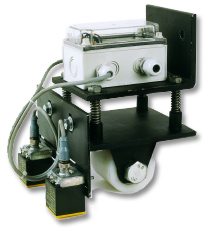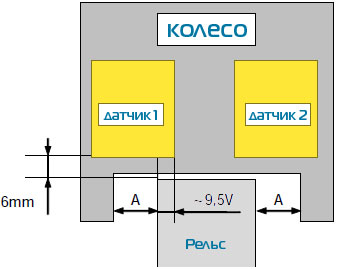 Removal of the alignment error with LENNIX.Foxtrot controller
Removal of the alignment error with LENNIX.Foxtrot controller
During crane movement there is always a velocity difference between the two opposite sides of a crane bridge. This can result from inaccuracies during base mounting assembly, different diameters of the driving wheels, wheel slipping, misalignments and bends in crane runways, motor velocity differences, inaccuracies in the reducing unit and other irremovable factors. Due to the above-mentioned reason, a crane might be moving with a small alignment error, and the displacement angle is constantly changing. This leads to a significant wear-out of side wheel flanges and crane runways, creates mechanical stress for the steelworks. There is also a risk of jamming.

The LENNIX.Foxtrot system used by Dvesta specialists offer an effective solution to eliminate all uneven horizontal off-axis displacements by means of an electronic control systems. In view of the fact, that the above-described negative outcomes for the mechanic elements are produced by the velocity differences between the opposite sides of the mechanism, it can be eliminated through separate control of each part.
How it works
The controller receives data from the analogous inductive detectors placed on one side of the mechanism. They estimate the actual displacement between the running wheel and crane railway central points.

Measurement range per one detector – 20 mm. In case two detectors are used, the working space can be expanded to 40 mm. Based on the data provided by detectors, the computing system calculates the axis displacement of the mechanism from the railway and provides separate velocity adjustments for each of the mechanism sides by taking into account the speed and direction of movement. For example, if one of the sides falls behind the other, its speed is forcefully increased until the bending angle becomes minimal. This way any displacement, as well as the alignment errors of opposite side movements, is almost immediately eliminated. In most cases the system facilitates wheel displacement form the railway central point within ±5 mm. Thus, there is either no rare contact between the wheel flanges and railways.

Taking into account the significant time and labor resources required to replace wheels, especially in case the wheels are brought into action by a the motor reducing unit, the contemporary automated straight run systems are more and more often used for crane electric drives and subsequently reduce any operation idle times caused by maintenance of the base mounting. The straight run systems eliminate wear-out of crane wheels and ensure practically no mechanical stress from misalignment in the metal constructions.



